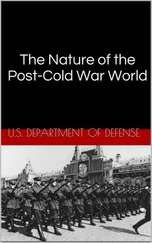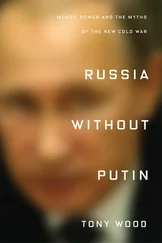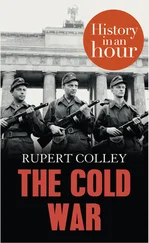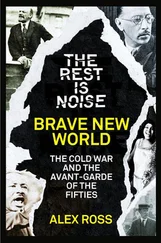At the heart of the matter was a fundamental conflict that persists to this day: the US desire for balance of payments equilibrium is incompatible with the dollar's role as a global currency and the consequent need to supply dollar liquidity to the whole world. This conflict created by the Bretton Woods system was first identified in the 1950s by Belgian-American economist Robert Triffin and has come to be known as the ‘Triffin Dilemma’. It was not possible for the US to simultaneously issue enough dollars to satisfy the trading needs of the entire world and maintain a fixed exchange rate against gold. For one thing, as Keynes had pointed out in the 1930s, new supplies of gold were not keeping pace with the growth in the economy and in trade. And to keep the world supplied with sufficient dollar liquidity, the US must continue to run a balance of payments deficit. Failure to do so would starve the rest of the world of dollars and precipitate a liquidity crunch similar to the one in gold that had contributed to the Great Depression (see Chapter 3for further discussion).
In the face of economic pressures and speculative attacks on the dollar, Nixon went on national television on 15 August 1971. In the grainy analogue broadcast, he announced in a calm tone that the US was suspending the dollar's convertibility to gold. In the height of irony, he told viewers that ‘The effect of this action … will be to stabilise the dollar’. 64 At the same time, he announced a 90-day wage price freeze to combat inflation and demonstrate to other countries that the US was taking its share of pain, as well as a temporary 10 percent import surcharge to protect US manufacturers from near-term currency fluctuations.
Nixon's announcement stunned the world. The President hadn't even forewarned the IMF. The US subsequently met with the other Group of 10 (G-10) countries at the Smithsonian Institute in Washington DC in December that year and, following two days of tough negotiations, announced that the dollar would, on average, be devalued by 10 percent, while the Deutschmark was revalued upwards by 13.6 percent and the yen by 16.9 percent. The dollar was pegged at $38 per ounce of gold and the permitted fluctuation from the new parities was widened to 2.25 percent. However, the Smithsonian Agreement did not hold. Nixon was not interested in being tethered to the new parities and, following his resounding election victory over George McGovern, attempts by the G-10 to re-establish a system of fixed parities were abandoned in 1973. The dollar would, henceforth, be a freely floating fiat currency without any fixed reference to gold or any other asset.
By ditching the shackles of gold, Nixon had established America's absolute monetary sovereignty. No longer would the US government be constrained in the amount of currency it could issue by its holdings of gold. And contrary to Harry White's concerns, the dollar maintained its role as the global reserve currency. By that time, the dollar was already too entrenched in the global monetary system and there was no obvious alternative to it. The freely floating dollar introduced volatility into the foreign exchange market that had not existed under the Bretton Woods system. It also allowed the dollar to depreciate based on America's relative economic performance versus its trading partners. However, as discussed in Chapter 3, steps taken by foreign central banks to maintain the stability of their currencies has limited the extent to which the dollar has actually been allowed to fall.
The second financial policy shock initiated under Nixon's administration was a domestic one. This was the move to abolish fixed brokerage commissions for trading shares on the NYSE.
For 183 years, pursuant to the Buttonwood Agreement of 17 May 1792 (so-called after the legendary buttonwood tree outside 68 Wall Street, under which the NYSE was established), brokers of the NYSE set a minimum level for the trading commissions they charged to their clients. By the 1960s, this clubby arrangement was the subject of increasing investor criticism. Moreover, an alternative over-the-counter (OTC) market was emerging as an avenue for investors to avoid paying fixed commissions. A heated debate between the Justice Department, the SEC, the NYSE and Wall Street brokers developed over the issue. However, in 1973, the SEC finally faced down diehard opposition from the brokerage community and initiated the process to put an end to fixed commissions. On 1 May 1975, which came to be known as ‘May Day’ within the industry, commissions for trading shares on the NYSE were finally deregulated.
At first, brokers clung to their previous commission levels. However, over time, competition dramatically reduced the cost of trading on the NYSE as discount brokers like Charles Schwab emerged, charging clients a fixed dollar amount per trade irrespective of the number or value of shares traded. The fall in trading costs contributed to huge growth in trading volumes in the following decades.
As the profitability of the old fixed commission structure disappeared, US brokers sought to scale up in order to extract cost efficiencies. Throughout the 1950s and 1960s, there had been four mergers between major US securities firms. Between 1975 and 1980, there were 29 such mergers and the pace accelerated throughout the 1980s and 1990s. Names like White, Weld & Co. were swallowed up by Merrill Lynch, while Kidder Peabody was merged into Paine Webber, which itself was acquired by the Swiss bank UBS in 2000.
These enlarged US firms were also incentivised to seek out new markets overseas and to develop new business lines. The international expansion of US financial institutions contributed to the further globalisation of the dollar. However, it was the expansion of a particular new type of financial product that was to turbocharge the growth of dollar-based finance.
In a money-based economy, the price of all assets is referenced to the money unit of account. In allowing the dollar to fluctuate freely, Richard Nixon had unleashed far greater volatility in all financial assets. This created a need for producers, consumers and investors to hedge the risk of large price swings. It also created huge opportunities for financial speculators. With the end of their fixed commission structure in share trading, Wall Street firms were to discover a huge new profit centre in derivatives.
Up until the 1970s, derivatives had been a specialised and arcane area of financial markets. They had largely been employed by producers and consumers of commodities to fix the price at which they would transact in the future, so as to manage the risk of intervening price movements. For example, a farmer could use a futures or forward contract to lock in a price at which he could sell his grain to a store owner. If there was a bumper crop and the price of grain falls due to oversupply, then the farmer will have benefited by having been able to sell his crop at a higher price than he would have gotten otherwise. On the other hand, if there was a drought resulting in widespread crop failures, then the price of grain would be expected to rise, and the store owner will have benefited.
In the US, Chicago has been the traditional hub for derivatives trading, owing to its location close to the farmlands and cattle country of the Midwest and its role as a transportation and distribution hub for agricultural produce. The Chicago Board of Trade (CBOT) was formed in 1848 as a forwards market for corn. The Chicago Produce Board, later renamed the Chicago Butter and Egg Board, was founded in 1874. This was later reorganised as the Chicago Mercantile Exchange (CME) in 1919.
Over in New York, a group of Manhattan dairy merchants launched the Butter and Cheese Exchange of New York in 1872. As the products traded widened to include poultry, dried fruit and canned goods, its name was changed in 1882 to the more grand-sounding New York Mercantile Exchange (NYMEX). Other regional exchanges trading different commodities sprang up around North America. Eventually, most would demutualise and consolidate into larger exchange groups. By 2008, CME, CBOT and NYMEX had been amalgamated to form the CME Group, which is today the largest derivatives exchange in the world.
Читать дальше












